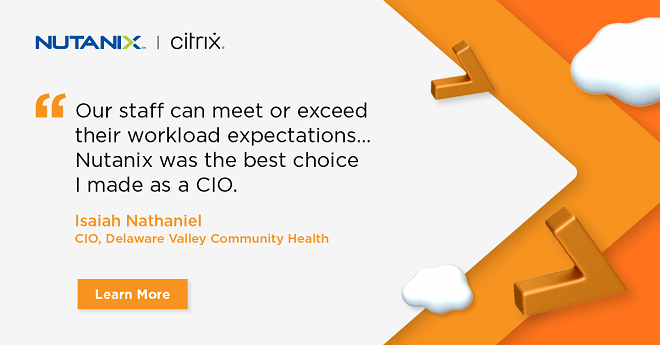The idea of context switching has meaning for computers and humans. With computing, it generally means stopping a process and starting another one. Machines can be designed to handle these abrupt changes. But when people switch from one task to another unrelated task, it can have jarring, disruptive effects, resulting in wasted time, mistakes and stress.
“You can’t just throw a bunch of varied tasks and environments at everybody and expect productivity to remain high,” said Wendy Pfeiffer, CIO at Nutanix. “The brain isn’t made to function like that.”
In a report titled The Cost of Interrupted Work: More Speed and Stress, researchers from the University of Irvine, California and Humbolt University of Berlin, Germany found that it takes over 20 minutes to regain focus after a distraction. That’s because different parts of the brain are activated every time someone switches between tasks.
People who regularly context switch can experience 40% lower productivity compared to people who maintain a focused workflow, eliminating an estimated $450 billion from the global economy each year, according to a post in The Transcript.
Pfeiffer believes the way to reduce the effects of context switching: setting up employees to succeed using the right mix of technologies, processes and methodologies.
She's vocal about worker productivity reports and the theories behind them.
"I think this productivity slump is happening because of the overhead associated with hybrid work," Pfeiffer wrote in a November 2022 LinkedIn post. "Not surprisingly, we're seeing productivity dropping in the first half of 2022 in line with the rise in the rate of previously fully-remote workers transitioning to "mandatory" hybrid--a type of work characterized by daily and weekly cycles of context switching."
In this third of a five-part Tech Barometer podcast series on hybrid work, Pfeiffer talks about what her IT team is doing to help reduce context switching for Nutanix workers.
One app her team uses is a chatbot that allows workers to communicate in their own languages. Nutanix is located in 16 countries. But its employees actually work in 61 different countries. A Nutanix worker in Spain, for example, working in Spanish with Spanish customers experiences the friction of having to translate.
“A huge context switch for that employee,” she said, “is to have to switch to English in order to do the work necessary, to say, create the quote.”
The Shift to Hybrid Work series includes:
Transcript (unedited):
Wendy Pfeiffer: Context switching is actually the least productive human activity. Some people struggle with stress and anxiety because they're not good at context switching.
Jason Lopez: Wendy Pfeiffer is the CIO of Nutanix. This is one of five podcasts about Nutanix IT’s transition to hybrid work.
Wendy Pfeiffer: When we think about hybrid work, it's all about the human being. Switching from context to context.
Jason Lopez: It would be easy enough to call it “change.” But there’s more to it than that. Context switching is the phenomenon of moving from one unrelated or unfamiliar environment or task to another. New parents starting a family, that’s a big context switch. Or what about schooling, when we go from elementary school sitting in one classroom all day, but as we get older we have take individual classes in different rooms. And so recently, over the past couple of years, the pandemic pushed a context switch on many workers.
Wendy Pfeiffer: When I'm at home in my home office, I sit in a particular kind of chair. I have a particular kind of lighting. My laptop computer is connected to a network that's coming to me over public internet. In the physical office at work I go to a cubicle, it's a different desk set up.
Jason Lopez: It’s estimated that only a very small portion of the population thrive on context switching, less than 5 percent. Most people experience mental, emotional and even physical stress.
Wendy Pfeiffer: It happens a hundred percent of the time. Even when I go from zoom meeting to zoom meeting, when I am simultaneously reading Slack messages at the same time that I'm having a conversation with you, there's a part of my brain that needs overhead energy in order to do that. And the more uncomfortable that is, the longer it takes us to change the mindset to sort of allow some of that stress to recede.
The nature of the universe has changed for them. A couple of decades ago digital natives were born, and they grew up with the internet. And now they’re here in the workplace. They have been acculturated in the multi-verse. It's natural for them. How do I make the workplace show up that way for those workers and enable productivity for my multi-generational workforce in the context of the workplace and how do I do things I can do? I have two things that I'm focused on this year to reduce context switching. The first is that I'm anchoring the workspace for all of our employees. We now have a standard laptop build and setup. And if you are switching from being in your home office to being in a physical office, a hub office, or to being on the road with your laptop, our goal is for it to function exactly the same way for me to be able to connect to the docking station the same way to join the network automatically without having to do some uncomfortable different thing for my applications to show up the same way and the same context whether I'm on my mobile phone or I'm on the customer's network for the VPN to work the same way.
Jason Lopez: It even comes down to how screens size on different monitors, so that no matter what the environment your settings are automatically detected. Wendy is a big fan of Kindle, which is built around a limited mission, the reading experience. But it does it quite well behaves consistently across a variety of environments.
Wendy Pfeiffer: And so how do we make the work laptop like my Kindle? I wouldn't think of being in any work context without that. That it always knows not just where I am but what I need and who I am. That's what we want. So we've chosen that device. It's maybe not the most modern device, but it's something we have. So we just want the laptop to get better and better and better at sort of being like the Kindle.
Jason Lopez: Secondly, Nutanix IT aspires to agnostic workflows using a tool called Move Works AI.
Wendy Pfeiffer: Move Works is the technology behind our tool X-Bot. But the thing about Move Works, it's a natural language processing tool. As an employee, whether I'm using email or I'm on our simpler intranet side or I'm in Slack if I need help, Bot is listening to my utterances for help and is responding by either automatically doing the thing I need or giving me access to knowledge articles to enable me to do the thing I need. That's sort of how we've used Move Works to this point.
Jason Lopez: But there’s more that Wendy wants to get out of Move Works. It has a chat bot that’s conversant in multiple languages.
Wendy Pfeiffer: Why should someone who speaks French have to ask for IT help in English while they're working from home or on the customer's site? Why couldn't they ask for help in French and get the help they need? Why do they have to get their password unlocked? Only when the team in the US is working, why can't they get that password 24 7? So we're using Move works to create this as ubiquitous as possible experience for our employees who have become globally dispersed. We had employees working in 16 countries five and a half years ago that I supported today. We have active larger cohorts of employees in 61 countries. So how do we enable that? Especially because a huge context switch for an employee who's sitting in their home office in Spain working with Spanish customers and Spanish partners and so on. A huge context switch for that employee is to have to switch to English in order to do the work necessary to say create the quote.
Jason Lopez: Wendy thinks this automation is a big deal because it enables more and more of a location agnostic workflow. It’s a capability you see on Star Trek.
Wendy Pfeiffer: We're trying to enable the universal translator. So you maybe don't even have to think, wow, I'm speaking in English and he's speaking in clinging on. How can we both understand each other? It's cuz that Universal Translators end play, there's lots of different Star Trek series and one of them is called Enterprise and it's the very first, it's the early days of Star Trek and they're just working out everything. They don't have the transporters working right? And there is no universal translator yet. There's this ai, they're training and there's a woman who is one of the officers on board who knows something 22 languages. They take her on every mission and then she's trying to train the AI and it later becomes the universal translator. In the first couple seasons of Star Trek Enterprise, when the aliens speak on the show, you can't understand what they're saying and there is no translation. Three years into the show now it sounds like they're speaking English, but every now and then the system breaks and then you hear them talking in the other language and you're like, What the hell? And everyone, all of the characters are going like, what are they saying, Uhoh, are we going to die or are we friends? And so it's that thing. We want to reduce that. And the employee experience.
Jason Lopez: Wendy Pfeiffer is the CIO of Nutanix. In this brief series: the future of how IT teams work... Nutanix IT’s shift to hybrid work. This is the Tech Barometer podcast, produced by The Forecast. You can find more in this series with Wendy at theforecastbynutanix.com.
Learn how the Nutanix Cloud Platform helps unify hybrid multicloud IT infrastructure.
Jason Lopez is executive producer of Tech Barometer, the podcast outlet for The Forecast. He’s the founder of Connected Social Media. Previously, he was executive producer at PodTech and a reporter at NPR.
© 2022 Nutanix, Inc. All rights reserved. For additional legal information, please go here.






